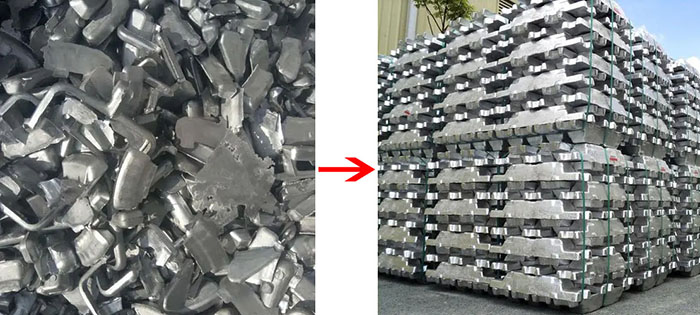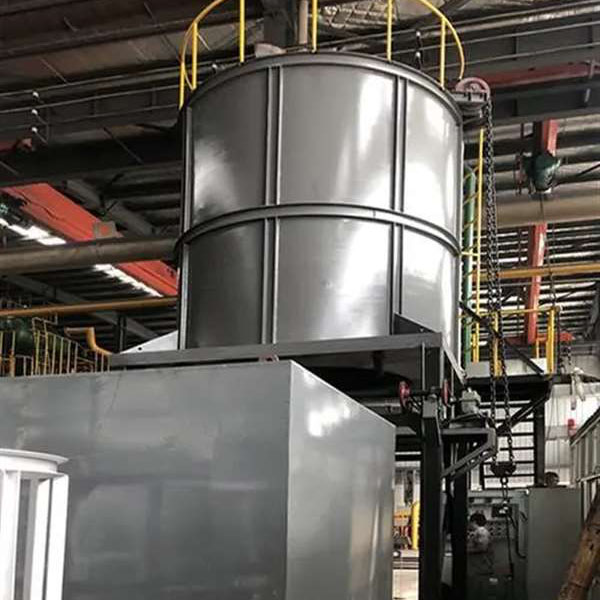The journey of transformation from scrap aluminum to aluminum ingots
The process of converting scrap aluminum into aluminum ingots is an intricate one, involving a series of machines and technologies.
Scrap aluminum undergoes a transformational journey to become aluminum ingots: Initially, it's broken down into smaller fragments using shredding machines, followed by a thorough cleaning to remove impurities. Next, advanced sorting systems categorize the cleaned scrap, which is then melted in specialized furnaces. During melting, any surfacing impurities are meticulously skimmed off. Depending on the desired product attributes, alloying elements may be introduced to the molten aluminum. This alloyed or pure molten aluminum is then cast into molds, subsequently cooled, and finally packaged for storage or transport, all facilitated by dedicated machinery tailored for each step.

Here is an overview with a focus on the machinery involved:
Shredding Machines: Initially, scrap aluminum pieces, which can be of various sizes, are fed into shredding machines. These machines break down the scrap into smaller, more manageable pieces.
Cleaning Machines: The shredded aluminum pieces are then cleaned to remove contaminants such as dirt, oil, and other residues. This ensures that only pure aluminum goes into the melting process, which is essential for producing high-quality ingots.
Sorting Systems: Modern sorting systems, sometimes incorporating magnetic systems or eddy current separators, are used to further differentiate between different types of aluminum scraps. This helps in ensuring the consistency and quality of the final product.
Melting Furnaces: The sorted and cleaned scrap is then loaded into melting furnaces. These furnaces, which can be rotary or reverberatory types, are specifically designed to melt aluminum efficiently while minimizing the oxidation of the metal.
Impurity Removal Systems: During the melting process, certain impurities may rise to the surface of the molten aluminum. These are skimmed off using specialized machines or tools to ensure the purity of the molten aluminum.
Alloying Process: Depending on the desired properties of the final aluminum product, other metals might be introduced to the molten aluminum in controlled quantities. This is done in dedicated furnaces or mixing apparatus.
Casting Machines: The molten, and possibly alloyed, aluminum is then poured into molds in casting machines. Depending on the desired shape and size of the ingots, different casting methods might be employed. Direct chill (DC) casting is one common method for ingot production.
Cooling Systems: Once cast, the hot aluminum ingots need to be cooled. This is achieved using cooling systems, which could be a series of cooling fans or water-cooled systems.
Packaging Machines: Finally, the produced aluminum ingots are packaged for transportation or storage. Specialized packaging machines help automate this process, ensuring the ingots are securely packed.

Throughout this entire process, the role of machinery cannot be understated. Not only do they ensure efficiency, but they also play a crucial role in determining the quality of the final aluminum ingots. Proper maintenance and operation of these machines are essential for a successful production cycle.
Interested in Our Products?
We understand that every project is unique, and sometimes you need more information than what's on the screen.
Why Send an Inquiry?
Personalized Assistance: Get tailor-made solutions for your specific needs.
Quick Response: Our dedicated team responds to all inquiries within 24 hours.
Expert Advice: Talk directly to our industry experts to get insights and recommendations.

